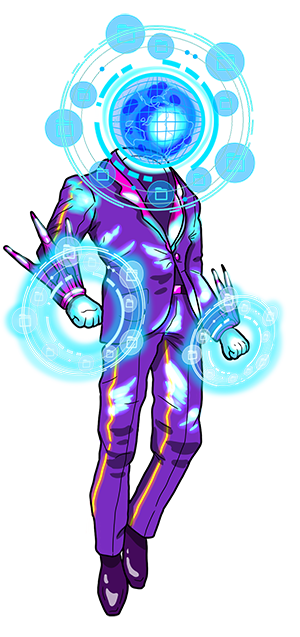In the ever-evolving world of gaming, players demand experiences that are both immersive and culturally authentic. And more than ever before, the localization process for video games is both an art and a science. The rise of Artificial Intelligence (AI) has introduced the industry to new tools that promise faster and more cost-effective localization. But can AI truly replace the creativity and cultural understanding that human linguists bring to the table? Or does the key to bringing localization to the next level lie in finding a balance between human and AI-powered efficiencies?
This article explores how a tiered strategy that combines AI and human expertise can enhance video game localization workflows and ultimately elevate the player experience.

The Promise of AI in Game Localization
AI-powered tools like Neural Machine Translation (NMT) have transformed the localization landscape by streamlining workflows and reducing turnaround times. These technologies excel at processing large volumes of text, including menus, system notifications, and instructional guides, which makes them extremely useful for global releases.
To help visualize this efficiency, consider a scenario in which a developer has a game with frequent content updates. To streamline the localization process, AI can quickly generate translations for recurring text elements, freeing up human translators to focus on new features. The ability to automate repetitive tasks allows localization teams to focus their energy on more nuanced aspects of the process, and developers to ultimately deploy updates faster across multiple languages.
The Limits of Automation
While AI offers remarkable efficiency, it falls short in areas that require creativity and cultural sensitivity. After all, localization isn’t just about translating words; it’s about capturing the soul of a game.
Imagine a game in which riddles, songs, or narrative choices drive the plot. AI often struggles to grasp the context or tone of elements like these, which can lead to translations that might be technically accurate, but feel disjointed or flat to audiences. For example, in narrative-driven games like Detroit: Become Human, every word carries emotional weight and even a small inconsistency can disrupt a player’s immersion.
Similarly, AI does not always understand cultural nuances. Without human oversight, AI-selected terms or references could inadvertently offend players, or simply fail to resonate with them. This is why human expertise remains essential to the localization process, especially for games with intricate world-building or deeply personal stories at their core.
Bear in mind, too, that even if we’re talking about just translating words, texts in video games are highly contextual. Depending on where a string of text appears, a translation can be a perfect fit—or completely off. This type of real-world (and even spatial) knowledge is a weak spot for most AI systems. Professional game localizers can overcome that contextual challenge with their personal knowledge of the product and their real-life, years-long experience playing games. That is why most gaming companies add an additional step of Linguistic Quality Assurance (LQA) testing after the game has been localized by professional translators, to make sure that the localizations in context land appropriately, and do not interfere with the player experience.
A Tiered Strategy for Success
Success in harnessing AI tools for game localization can be found by adopting a tiered workflow that blends automation with human oversight. This is particularly true in today’s development world, where reduced time to market is the holy grail for most companies as they compete for audience attention, and for whom speed and efficiency are not an option, but a requirement. In those cases, a content and pipeline tiering approach ensures that the strengths of both AI and human linguists are maximized, and often looks something like this:
- Tier 1: Initial Translations. AI handles high-volume, repetitive content like menus or notifications, thus significantly reducing turnaround times.
- Tier 2: Human Oversight. Professional linguists review and refine the AI output by ensuring that translations are accurate, contextually appropriate, and aligned with the game’s tone.
- Tier 3: Creative Adaptation. Localization experts step in to handle elements like dialogue, cultural references, and jokes, thereby preserving the game’s narrative integrity and emotional resonance.
This process not only enhances overall efficiency but also safeguards the quality and authenticity that players expect from localized content.

The key to successful tiering is a solid understanding of your content and pipelines, so you can identify what’s most important in various scenarios. For example, in a LiveOps scenario, reduced time to market might be a priority, so you’d want to create a workflow that allows you to deliver content fast. In an international marketing scenario, you might prioritize quality and cultural adaptation, and rely on SEO and international marketing experts to maximize your campaigns and generate more revenue. Understanding your content and your pipelines, and defining what success means to you will allow you to ultimately design the optimal workflows for your program’s needs and make an impact.
Why Balance Matters
The gaming industry is a global phenomenon, and localization is a crucial part of its growth. AI can help developers reach international audiences faster and more cost-effectively in the localization process, but it cannot replace human expertise. It’s only by combining the speed of AI with the insight and creativity of human linguists that developers can truly achieve both scale and quality in their localization. A well-balanced localization saves time and resources—and most important of all, it ensures that players worldwide can connect with the game on a deeper and more culturally authentic level.
The Takeaway
The place for AI in game localization is undeniable, but it’s also clear that technology alone cannot meet the demands of today’s global gamers, who seek high-quality, immersive experiences. By adopting a tiered approach that leverages AI for efficiency, and human expertise for creativity, developers can deliver precisely these experiences that resonate—loudly—across cultures.
In the end, no matter how much AI enhances the work of localization, the process can never be a solely technical endeavor. Localization is a bridge between players and the stories they love, and it requires the work of people to support it. But with the right balance of technical tools and human talent, the gaming industry can continue to evolve—efficiently and creatively—as it creates worlds for everyone to enjoy.



